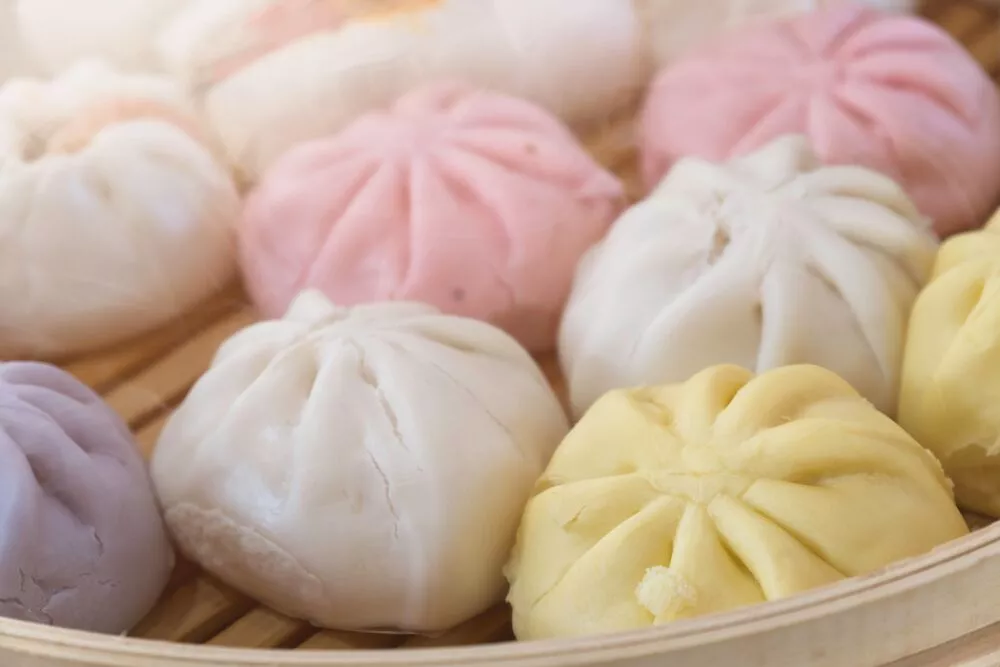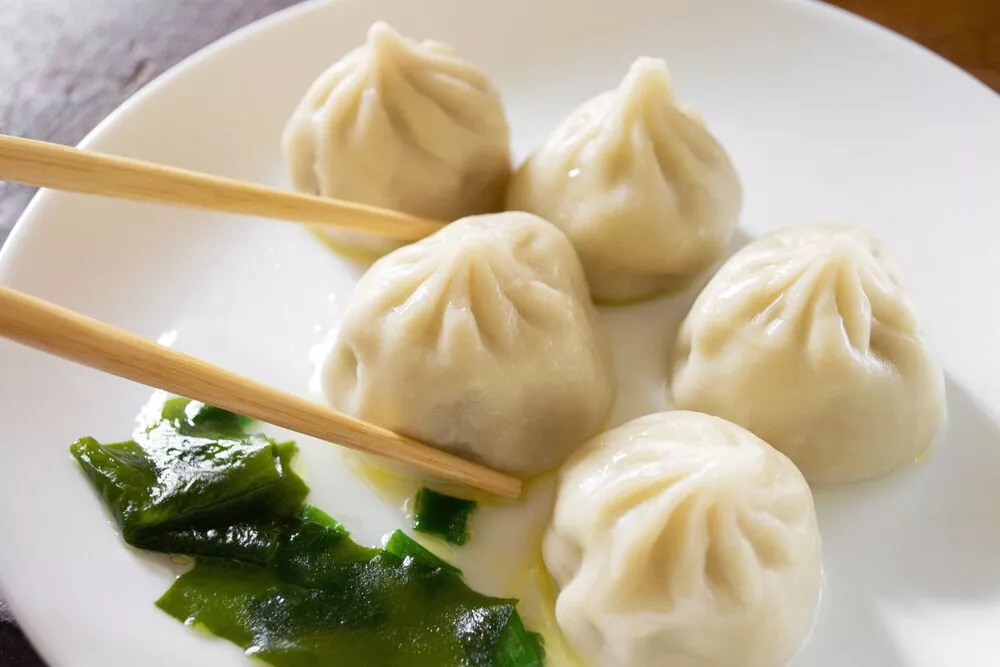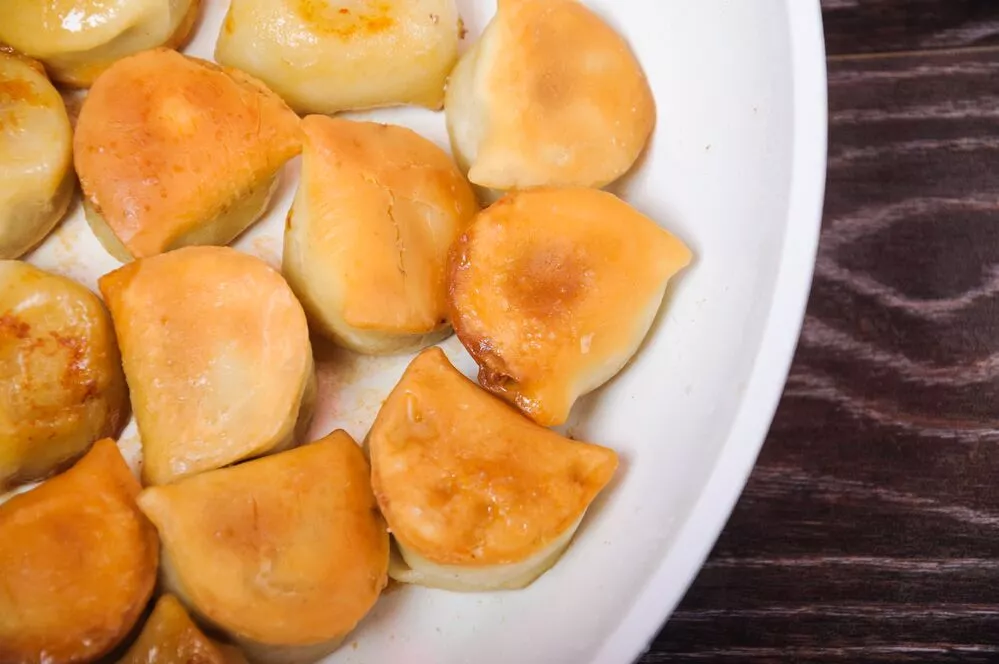Steam vs Fried Dumplings: Discover the differences between steam and fried dumplings, including their taste, texture, cooking methods, health considerations, and cultural significance. Whether you prefer the delicate and moist nature of steam dumplings or the crispy exterior and succulent fillings of fried dumplings, this article provides insights to help you make an informed choice.
Table of Contents
Toggle1. Introduction
Dumplings, in their various forms, have been savored for centuries. These delectable morsels of joy come in different shapes, sizes, and flavors, satisfying palates across cultures. Steam and fried dumplings are two popular preparations that offer unique experiences on your taste buds. Let’s explore their characteristics and find out which one suits your culinary preferences.
Steam vs Fried Dumplings
2. Definition of Steam Dumplings
Steam dumplings, also known as steamed dumplings, are delicately prepared parcels of joy. They consist of a thin wrapper encasing a filling of meat, vegetables, or both. The dumplings are then placed in a steamer, allowing the heat to cook the ingredients to perfection. This cooking method ensures that the dumplings remain moist and tender, preserving the flavors within.
3. Definition of Fried Dumplings
On the other hand, fried dumplings bring a delightful crispiness to the table. These dumplings are made by pan-frying or deep-frying the filled parcels. The cooking process gives them a golden brown exterior with a satisfying crunch. The frying method adds an extra layer of flavor and texture, making fried dumplings a mouthwatering treat.
4. Taste and Texture
When it comes to taste and texture, steam and fried dumplings offer contrasting experiences. Steam dumplings are renowned for their delicate and light nature. The steaming process ensures that the filling retains its moisture, resulting in a tender and juicy bite. On the other hand, fried dumplings boast a delightful contrast between the crispy exterior and the succulent filling inside. The frying process adds a satisfying crunch, elevating the overall taste and texture profile.
5. Cooking Method
Steam and fried dumplings differ significantly in their cooking methods. Steam dumplings require a steamer or a steaming basket, where they are placed above simmering water. The steam gently cooks the dumplings, ensuring they are evenly heated. On the contrary, fried dumplings require a hot pan with oil for pan-frying or deep-frying. The high heat seals the exterior, creating a crispy shell while cooking the filling to perfection.
6. Health Considerations
When it comes to health considerations, steam dumplings have an advantage. The steaming process requires little to no oil, making them a healthier option. The absence of excessive oil reduces the calorie content and the amount of unhealthy fats. On the other hand, fried dumplings absorb oil during cooking, leading to a higher calorie count. However, moderation is key, and enjoying fried dumplings occasionally can still be a delightful indulgence.
7. Popular Variations
Both steam and fried dumplings have various popular variations that showcase the diversity of flavors across different cultures. Steam dumplings include classics like Chinese siu mai, Japanese gyoza, and Korean mandu. Each variation brings its unique fillings and regional influences. Fried dumplings, on the other hand, feature delectable treats such as potstickers, Indian samosas, and Jamaican fried dumplings. These variations offer a delightful range of flavors and textures to explore.
8. Cultural Significance
Dumplings hold great cultural significance in many countries and communities. In Chinese cuisine, steam dumplings are an integral part of traditional dim sum meals, symbolizing unity and family togetherness. Fried dumplings, on the other hand, are often associated with festive celebrations and street food culture in various Asian and Western cultures. The cultural significance of both types of dumplings adds an extra layer of appreciation and enjoyment.
9. Availability and Accessibility
When it comes to availability and accessibility, steam and fried dumplings may vary depending on your location. Steam dumplings are commonly found in Asian restaurants, dim sum parlors, and specialty dumpling houses. On the other hand, fried dumplings can be found in street food stalls, food trucks, and diverse international eateries. The accessibility of both types of dumplings may depend on the culinary offerings in your area.
10. Nutritional Comparison
While steam dumplings have an advantage in terms of lower fat content, it’s essential to consider the nutritional aspects of both preparations. The nutritional value of dumplings depends on the filling and the wrapper used. Steam dumplings often feature leaner fillings like seafood, chicken, or vegetables, providing a good source of protein and essential nutrients. Fried dumplings may have richer fillings and a higher calorie count due to the frying process. It’s crucial to enjoy dumplings in moderation and be mindful of the ingredients used.
11. Preparation and Serving
Preparing steam and fried dumplings involves different techniques and considerations. Steam dumplings require careful folding and sealing of the wrapper, ensuring a secure package for steaming. On the other hand, fried dumplings need to be properly sealed to prevent filling leakage during frying. Serving-wise, steam dumplings are often presented with dipping sauces such as soy sauce or chili oil, accentuating their delicate flavors. Fried dumplings may be served with accompanying sauces that complement their crispy texture.
12. Versatility and Adaptability
One of the remarkable aspects of dumplings is their versatility and adaptability. Steam and fried dumplings can be customized with various fillings to suit individual preferences. Whether you crave a vegetarian delight, a savory meat filling, or a combination of flavors, both types of dumplings can accommodate your desires. This versatility allows for endless creativity in the kitchen and ensures a delightful dining experience.
13. Cost Comparison
Cost is often a significant factor when it comes to food choices. In general, steam dumplings tend to be more affordable than fried dumplings. The cooking method for steam dumplings requires less oil, which can result in lower production costs. On the other hand, the frying process for fried dumplings consumes more oil, making them slightly pricier. However, the overall cost may vary depending on the ingredients, location, and specific culinary establishments.
14. Consumer Preferences
The choice between steam and fried dumplings ultimately comes down to personal preferences. Some individuals prefer the delicate and moist nature of steam dumplings, savoring the subtle flavors. Others find joy in the contrasting textures and bold flavors of fried dumplings. Consumer preferences can also be influenced by cultural backgrounds, previous culinary experiences, and individual taste preferences. Exploring both types of dumplings can help you discover your own favorite.
15. Conclusion
In the battle of steam vs fried dumplings, both preparations offer unique and delightful experiences. Steam dumplings captivate with their tender texture and delicate flavors, while fried dumplings entice with their crispy exterior and succulent fillings. The choice ultimately depends on your personal preferences, health considerations, and the occasion. So, whether you opt for the steamed delights or the crispy treats, dumplings will continue to tantalize your taste buds with their timeless charm.
Frequently Asked Questions (FAQs)
Q1. Can I use the same fillings for both steam and fried dumplings? Yes, you can use similar fillings for both steam and fried dumplings. However, keep in mind that the cooking methods may slightly affect the texture and taste of the fillings.
Q2. Are steam dumplings healthier than fried dumplings? In general, steam dumplings are considered healthier than fried dumplings due to the lower fat content. However, it’s important to consider the specific ingredients and enjoy dumplings in moderation.
Q3. Can I make dumplings at home? Absolutely! Making dumplings at home can be a fun and rewarding culinary experience. You can find numerous recipes and tutorials online to guide you through the process.
Q4. Are there vegetarian options available for dumplings? Yes, there are plenty of vegetarian options available for dumplings. Fillings like tofu, mushrooms, and various vegetables can be used to create delicious vegetarian dumplings.
Q5. Where can I find the best dumplings in my area? The best place to find the best dumplings in your area is to explore local restaurants, specialty dumpling shops, or seek recommendations from friends and food enthusiasts. Online reviews and food apps can also be helpful in finding popular dumpling destinations.
Q6. If I have any further questions or need assistance, how can I contact you? If you have any questions or need assistance, please feel free to reach out to our knowledgeable team. You can contact us through the provided contact form on our website. We are here to help!



